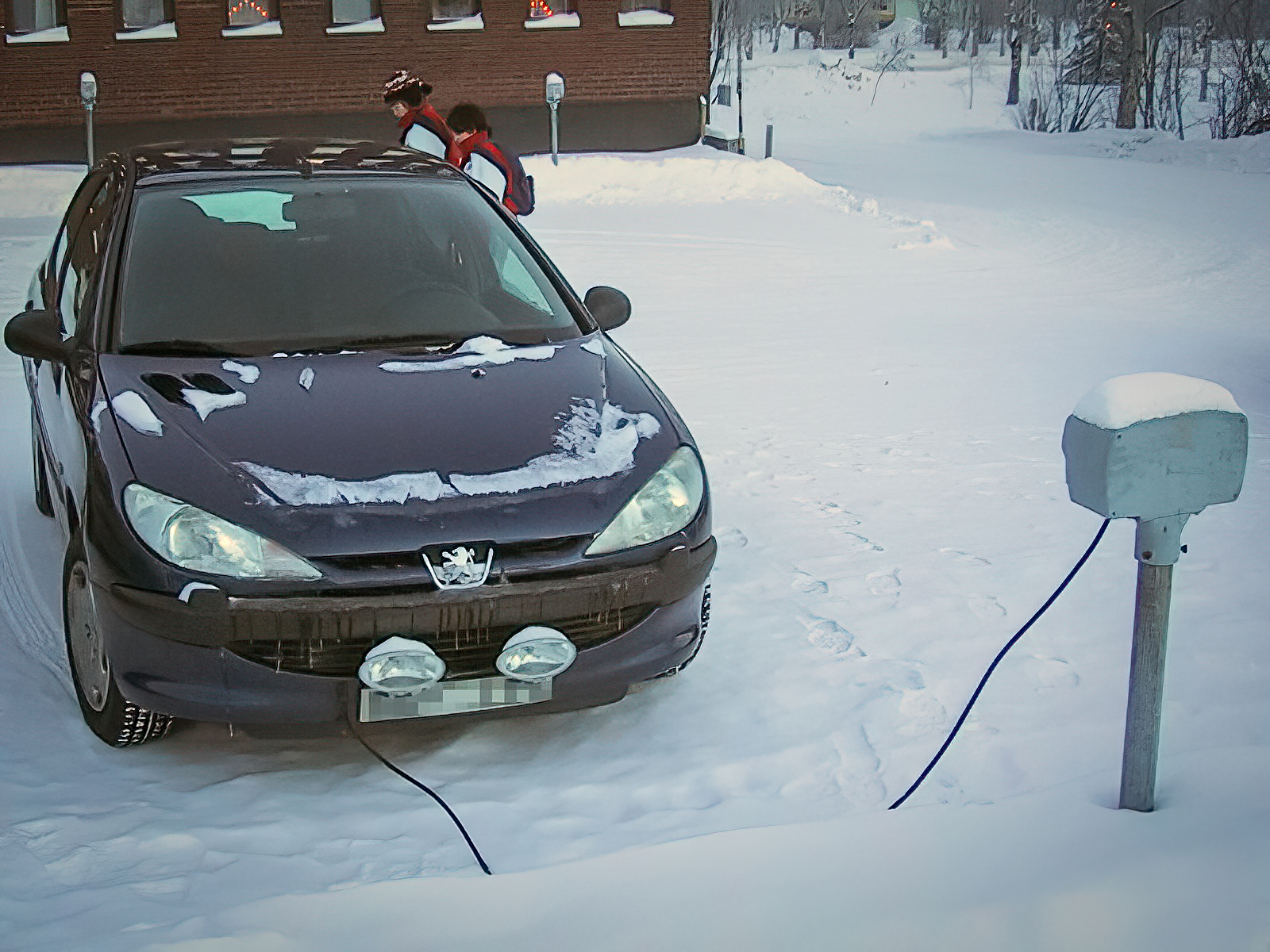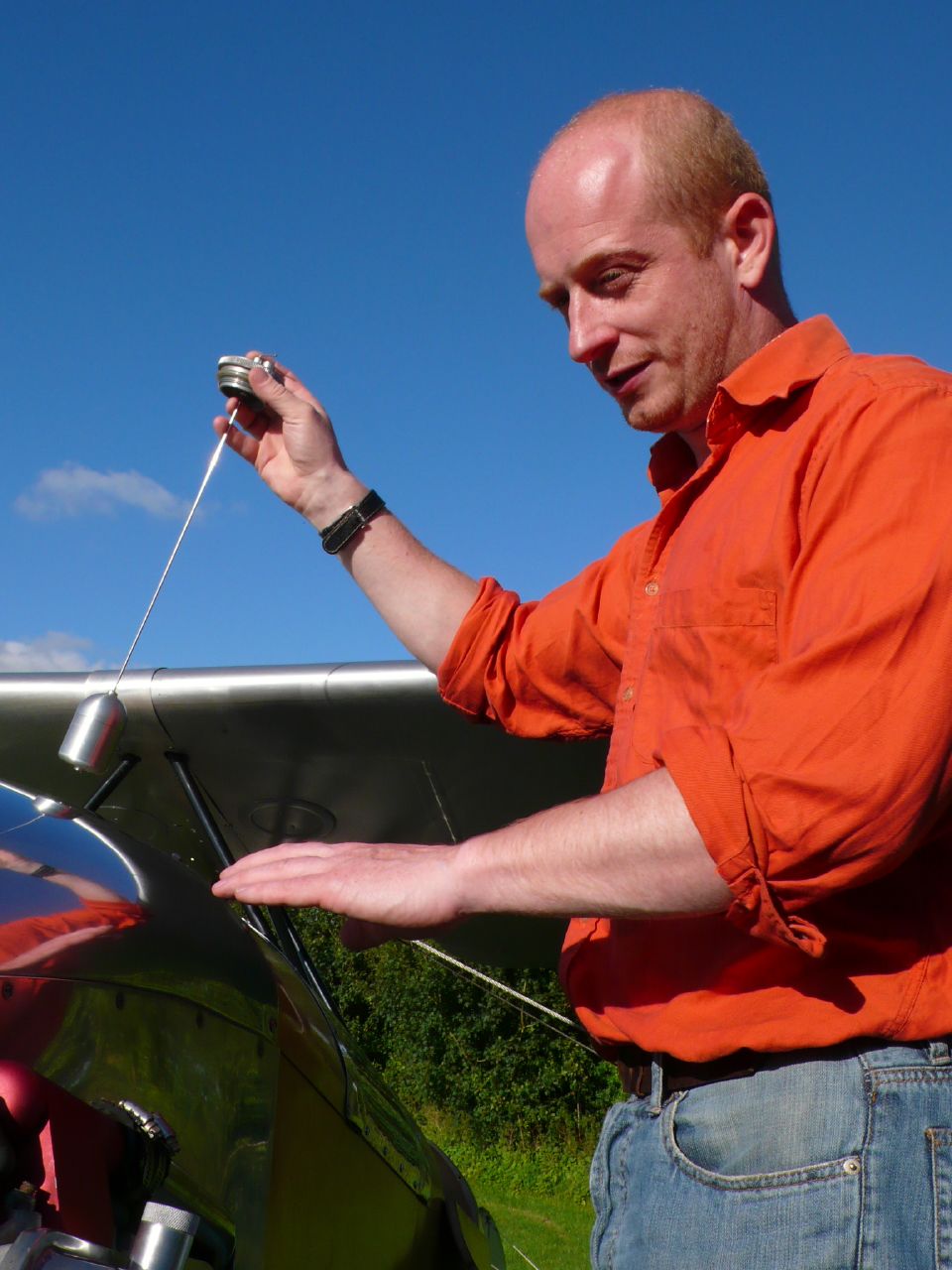|
Engine Block Heater
A block heater is used in cold climates to warm an engine prior to starting. They are mostly used for car engines; however they have also been used in aircraft engines. The most common design of block heater is an electrical heating element embedded in the engine block. Purpose Pre-heating of an engine is primarily used to make it easier to start. Added benefits are: *The cabin heater produces heat sooner for comfort and to de-fog the windscreen. *Reduction of condensation of fuel on cold cylinder walls during start thus ** saving fuel and reducing exhaust emissions and ** reducing oil dilution by gasoline scraped into the oil pan by the piston rings. *The engine reaches operating temperature sooner, so the engine does not run rich as long. This further reduces fuel consumption and emissions. *Less load on the starter and battery thereby prolonging their service lives. *Less engine wear as oil circulation is improved. *Reduces the need for a Remote starter, thereby further ... [...More Info...] [...Related Items...] OR: [Wikipedia] [Google] [Baidu] |
Thermos
A vacuum flask (also known as a Dewar flask, Dewar bottle or thermos) is an insulating storage vessel that greatly lengthens the time over which its contents remain hotter or cooler than the flask's surroundings. Invented by Sir James Dewar in 1892, the vacuum flask consists of two flasks, placed one within the other and joined at the neck. The gap between the two flasks is partially evacuated of air, creating a near-vacuum which significantly reduces heat transfer by conduction or convection. When used to hold cold liquids, this also virtually eliminates condensation on the outside of the flask. Vacuum flasks are used domestically to keep beverages hot or cold for extended periods of time, and for keeping cooked food hot. They are also used for thermal cooking. Vacuum flasks are also used for many purposes in industry. History The vacuum flask was designed and invented by Scottish scientist Sir James Dewar in 1892 as a result of his research in the field of cryogenics ... [...More Info...] [...Related Items...] OR: [Wikipedia] [Google] [Baidu] |
Andrew Freeman (inventor)
Andrew Freeman (March 10, 1909 – January 17, 1996) was an American electrical engineer and the inventor of the electric block heater for automobiles. Andrew L. Freeman was born in Upham, North Dakota. He attended the University of North Dakota in Grand Forks, North Dakota, where he majored in electrical engineering. He served as general manager of Minnkota Power Cooperative from 1940 to 1982. Since 2004, Minnkota Power Cooperative, Inc. has sponsored the Andrew Freeman Design Innovation Competition at the University of North Dakota The University of North Dakota (also known as UND or North Dakota) is a public research university in Grand Forks, North Dakota. It was established by the Dakota Territorial Assembly in 1883, six years before the establishment of the state of ... College of Engineering and Mines. Freeman first developed a block heater around 1947, and received U.S. Patent #2487326 on November 8, 1949. In 1947, Freeman co-founded and served as president of F ... [...More Info...] [...Related Items...] OR: [Wikipedia] [Google] [Baidu] |
Winter Campaign Of 1941–42
Winter is the coldest season of the year in polar and temperate climates. It occurs after autumn and before spring. The tilt of Earth's axis causes seasons; winter occurs when a hemisphere is oriented away from the Sun. Different cultures define different dates as the start of winter, and some use a definition based on weather. When it is winter in the Northern Hemisphere, it is summer in the Southern Hemisphere, and vice versa. In many regions, winter brings snow and freezing temperatures. The moment of winter solstice is when the Sun's elevation with respect to the North or South Pole is at its most negative value; that is, the Sun is at its farthest below the horizon as measured from the pole. The day on which this occurs has the shortest day and the longest night, with day length increasing and night length decreasing as the season progresses after the solstice. The earliest sunset and latest sunrise dates outside the polar regions differ from the date of the wint ... [...More Info...] [...Related Items...] OR: [Wikipedia] [Google] [Baidu] |
Messerschmitt Bf 109
The Messerschmitt Bf 109 is a German World War II fighter aircraft that was, along with the Focke-Wulf Fw 190, the backbone of the Luftwaffe's fighter force. The Bf 109 first saw operational service in 1937 during the Spanish Civil War and was still in service at the end of World War II in 1945. It was one of the most advanced fighters when it first appeared, with an all-metal monocoque construction, a closed canopy, and retractable landing gear. It was powered by a liquid-cooled, inverted-V12 aero engine. It was called the Me 109 by Allied aircrew and some German aces, even though this was not the official German designation. It was designed by Willy Messerschmitt and Robert Lusser who worked at Bayerische Flugzeugwerke during the early to mid-1930s. It was conceived as an interceptor, although later models were developed to fulfill multiple tasks, serving as bomber escort, fighter-bomber, day-, night-, all-weather fighter, ground-attack aircraft, and reconnaissance ... [...More Info...] [...Related Items...] OR: [Wikipedia] [Google] [Baidu] |
Radial Engine
The radial engine is a reciprocating type internal combustion engine configuration in which the cylinders "radiate" outward from a central crankcase like the spokes of a wheel. It resembles a stylized star when viewed from the front, and is called a "star engine" in some other languages. The radial configuration was commonly used for aircraft engines before gas turbine engines became predominant. Engine operation Since the axes of the cylinders are coplanar, the connecting rods cannot all be directly attached to the crankshaft unless mechanically complex forked connecting rods are used, none of which have been successful. Instead, the pistons are connected to the crankshaft with a master-and-articulating-rod assembly. One piston, the uppermost one in the animation, has a master rod with a direct attachment to the crankshaft. The remaining pistons pin their connecting rods' attachments to rings around the edge of the master rod. Extra "rows" of radial cylinders can be added i ... [...More Info...] [...Related Items...] OR: [Wikipedia] [Google] [Baidu] |
Dipstick
A dipstick is one of several measurement devices. Some dipsticks are dipped into a liquid to perform a chemical test or to provide a measure of quantity of the liquid. Since the late 20th century, a flatness/levelness measuring device trademarked "Dipstick" has been used to produce concrete and pavement surface profiles and to help establish profile measurement standards in the concrete floor and paving industries. Testing dipstick A testing dipstick is usually made of paper or cardboard and is impregnated with reagents that indicate some feature of the liquid by changing color. In medicine, dipsticks can be used to test for a variety of liquids for the presence of a given substance, known as an analyte. For example, urine dipsticks are used to test urine samples for haemoglobin, nitrite (produced by bacteria in a urinary tract infection), protein, nitrocellulose, glucose and occasionally urobilinogen or ketones. They are usually brightly coloured, and extremely rough to t ... [...More Info...] [...Related Items...] OR: [Wikipedia] [Google] [Baidu] |
Engine Block
In an internal combustion engine, the engine block is the structure which contains the cylinders and other components. In an early automotive engine, the engine block consisted of just the cylinder block, to which a separate crankcase was attached. Modern engine blocks typically have the crankcase integrated with the cylinder block as a single component. Engine blocks often also include elements such as coolant passages and oil galleries. The term "cylinder block" is often used interchangeably with "engine block", although technically, the block of a modern engine (i.e. multiple cylinders integrated with another component) would be classified as a monobloc. __TOC__ Construction The main structure of an engine typically consists of the cylinders, coolant passages, oil galleries, crankcase, and cylinder head(s). The first production engines of the 1880s to 1920s usually used separate components for each of these elements, which were bolted together during engine assembly. ... [...More Info...] [...Related Items...] OR: [Wikipedia] [Google] [Baidu] |
Oil Pan
A sump is a low space that collects often undesirable liquids such as water or chemicals. A sump can also be an infiltration basin used to manage surface runoff water and recharge underground aquifers. Sump can also refer to an area in a cave where an underground flow of water exits the cave into the earth. Examples One common example of a sump is the lowest point in a basement, into which flows water that seeps in from outside. If this is a regular problem, a sump pump that moves the water outside of the house may be used. Another example is the oil pan of an engine. The oil is used to lubricate the engine's moving parts and it pools in a reservoir known as its sump, at the bottom of the engine. Use of a sump requires the engine to be mounted slightly higher to make space for it. Often though, oil in the sump can slosh during hard cornering, starving the oil pump. For these reasons, racing motorcycles and piston aircraft engines are "dry sumped" using scavenge pumps and a s ... [...More Info...] [...Related Items...] OR: [Wikipedia] [Google] [Baidu] |
Core Plug
Core plugs, also called freeze plugs or Welch plugs, are used to fill the sand casting core holes found on water-cooled internal combustion engines. Purpose Sand cores are used to form the internal cavities when the engine block or cylinder head(s) is cast. These cavities are usually the coolant passages. Holes are designed into the casting to support internal sand forms and to facilitate the removal of the sand after the casting has cooled. These holes have no purpose after the sand has been removed. A core plug is a cap at the end of these passages used to prevent water or coolant leaking from the engine. Design Core plugs are usually thin metal cups press fitted into the casting holes, but may be made of rubber or other materials. In some high-performance engines the core plugs are large diameter cast metal threaded pipe plugs. Core plugs can often be a source of leaks due to corrosion caused by cooling system water. Although modern antifreeze chemicals do not evaporate ... [...More Info...] [...Related Items...] OR: [Wikipedia] [Google] [Baidu] |





